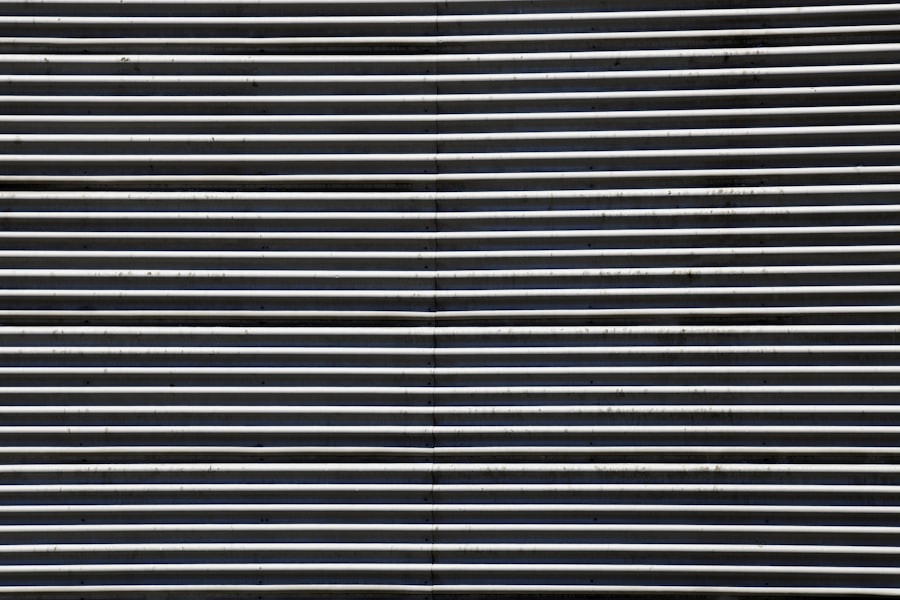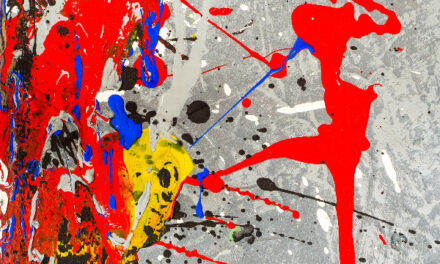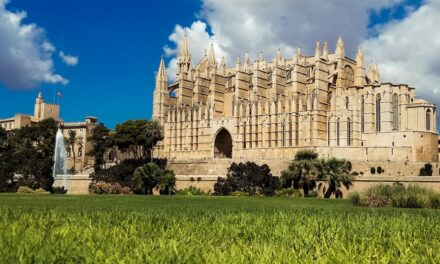Op Art, short for Optical Art, is a style of visual art that utilises optical illusions and geometric patterns to create the impression of movement, vibration, or swelling. It emerged in the 1960s and is closely associated with the Op Art movement, which drew inspiration from the Bauhaus and Constructivist movements. Op Art is characterised by its use of precise, repetitive patterns and contrasting colours to create the illusion of depth and movement.
The objective of Op Art is to engage the viewer’s perception and create a sense of visual disorientation. This style of art often plays with the viewer’s sense of perspective and challenges their perception of space and form. Op Art is typically created using simple geometric shapes such as lines, squares, and circles, arranged in a manner that creates the illusion of movement or depth.
The use of contrasting colours and precise, repetitive patterns is also a key characteristic of Op Art. Artists working in this style often employ optical illusions to create the impression of movement or vibration, resulting in visually striking and mesmerising artworks. The Op Art movement, which emerged in the 1960s, was influenced by the Bauhaus and Constructivist movements and was characterised by its use of geometric patterns and optical illusions to create the impression of movement and depth.
Op Art has continued to be influential in the world of art and design, and its impact can be observed in a wide range of creative disciplines.
Summary
- Op Art is a form of abstract art that uses optical illusions to create the impression of movement, vibration, or swelling.
- Op Art emerged in the 1960s and was influenced by the Bauhaus movement and the Constructivist movement.
- Characteristics of Op Art include the use of geometric shapes, precise patterns, and contrasting colours to create visual effects.
- Influential Op Art artists include Victor Vasarely, Bridget Riley, and Richard Anuszkiewicz.
- Op Art techniques often involve the use of repetition, rhythm, and the manipulation of light and shadow to create optical illusions.
History of Op Art
The Pioneers of Op Art
Victor Vasarely’s use of geometric patterns and optical illusions to create the impression of movement and depth was highly influential on the development of Op Art as a distinct style. His work paved the way for other artists, such as Bridget Riley and Richard Anuszkiewicz, who gained international recognition for their work in this style.
Characteristics of Op Art
The movement was characterised by its use of precise, repetitive patterns and contrasting colours to create the illusion of movement and depth. Op Art was also associated with the Op Art movement, which sought to engage the viewer’s perception and create a sense of visual disorientation.
Legacy of Op Art
The movement had a significant impact on the world of art and design, and its influence can still be seen today. Op Art’s influence can be seen in a wide range of creative disciplines, including fashion, architecture, and graphic design. Its legacy continues to inspire artists and designers, and its impact on the world of art and design remains unparalleled.
Characteristics of Op Art

Op Art is characterized by its use of optical illusions and geometric patterns to create the impression of movement, vibration, or swelling. The style often uses simple geometric shapes such as lines, squares, and circles, arranged in a way that creates the illusion of movement or depth. The use of contrasting colours and precise, repetitive patterns is also a key characteristic of Op Art.
Artists working in this style often use optical illusions to create the impression of movement or vibration, and the resulting artworks can be visually striking and mesmerizing. Op Art often plays with the viewer’s sense of perspective and challenges their perception of space and form. The aim of Op Art is to engage the viewer’s perception and create a sense of visual disorientation.
This style of art can be both mesmerizing and disorienting, as it challenges the viewer’s perception and creates a sense of visual confusion. Op Art is often associated with the Op Art movement, which emerged in the 1960s and was influenced by the Bauhaus and Constructivist movements. The movement was characterized by its use of geometric patterns and optical illusions to create the impression of movement and depth.
Influential Op Art Artists
Victor Vasarely is often considered one of the pioneers of the Op Art movement. His use of geometric patterns and optical illusions to create the impression of movement and depth was highly influential on the development of Op Art as a distinct style. Bridget Riley is another influential artist associated with Op Art.
Her use of precise, repetitive patterns and contrasting colours to create visually striking artworks has had a significant impact on the world of art and design. Richard Anuszkiewicz is also an influential figure in the world of Op Art. His use of geometric shapes and optical illusions to create visually striking artworks has had a lasting impact on the development of this style.
These artists have played a significant role in shaping the development of Op Art as a distinct style, and their influence can still be seen today in the work of contemporary artists working in this style.
Op Art Techniques
Op Art often uses simple geometric shapes such as lines, squares, and circles, arranged in a way that creates the illusion of movement or depth. The use of contrasting colours and precise, repetitive patterns is also a key characteristic of Op Art. Artists working in this style often use optical illusions to create the impression of movement or vibration, and the resulting artworks can be visually striking and mesmerizing.
Op Art often plays with the viewer’s sense of perspective and challenges their perception of space and form. The aim of Op Art is to engage the viewer’s perception and create a sense of visual disorientation. This style of art can be both mesmerizing and disorienting, as it challenges the viewer’s perception and creates a sense of visual confusion.
Op Art in Popular Culture

Influence on Creative Disciplines
The mesmerising and disorienting nature of Op Art has made it a popular choice for designers looking to create visually striking artworks that engage the viewer’s perception.
Embraced by Popular Culture
Op Art has also been embraced by popular culture through its use in advertising, album covers, and film titles.
Eye-Catching Visuals
Its visually striking nature has made it a popular choice for designers looking to create eye-catching visuals that capture the viewer’s attention.
The Impact of Op Art
Op Art has had a lasting impact on the world of art and design, with its influence being seen in a wide range of creative disciplines. Its use of optical illusions and geometric patterns to create visually striking artworks has made it a popular choice for designers looking to engage the viewer’s perception. The mesmerizing and disorienting nature of Op Art has made it a popular choice for designers looking to create visually striking artworks that capture the viewer’s attention.
Its influence can be seen in popular culture through its use in advertising, album covers, film titles, and fashion. Op Art continues to be influential in the world of art and design, with its impact being felt across a wide range of creative disciplines.
If you are interested in learning more about different art movements, you may want to check out an article on Expressionism. This art movement, which originated in Germany in the early 20th century, focused on expressing emotions and feelings through bold and vibrant colours and exaggerated brushstrokes. It was a reaction against the more traditional and realistic styles of art that came before it, and it had a significant impact on the development of modern art.
FAQs
What is Op Art?
Op Art, short for Optical Art, is a style of visual art that uses optical illusions and geometric patterns to create the impression of movement, vibration, or swelling. It often employs bold, contrasting colors and precise, repetitive patterns to create these effects.
When did Op Art originate?
Op Art emerged in the 1960s, gaining popularity as an art movement during this time. It was influenced by the Constructivist and Bauhaus movements, as well as the work of artists such as Victor Vasarely and Bridget Riley.
What are the key characteristics of Op Art?
Key characteristics of Op Art include the use of geometric shapes, precise patterns, and the manipulation of optical effects to create the illusion of movement or depth. Op Art often employs high contrast, black and white or bold, contrasting colors to enhance these effects.
What are some famous Op Art pieces or artists?
Some famous Op Art artists include Victor Vasarely, Bridget Riley, and Richard Anuszkiewicz. Notable Op Art pieces include Vasarely’s “Zebra” and Riley’s “Movement in Squares.”
How does Op Art differ from other art movements?
Op Art differs from other art movements in its focus on creating optical illusions and visual effects. While it shares some similarities with movements such as Constructivism and Bauhaus in its use of geometric shapes and patterns, Op Art is distinct in its emphasis on creating the illusion of movement and depth through optical effects.




